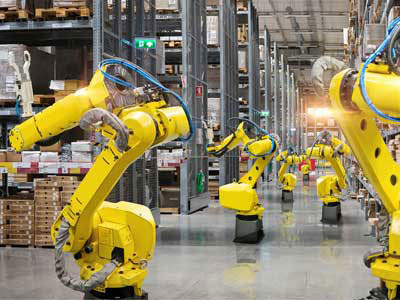Key Takeaway
The biggest problem with robots is their rigidity. Made from bolts, bearings, and motors, robots struggle on uneven surfaces. This lack of flexibility makes it hard for them to adapt to different environments. Additionally, their rigid materials can be a safety concern when interacting with humans, limiting their use in many scenarios. Robots also face issues with autonomy and decision-making, as they often rely on pre-programmed instructions and struggle with real-time problem-solving. These challenges hinder their full potential in dynamic and unpredictable environments.
Technical Limitations
Understanding technical limitations is crucial in industrial automation. These constraints define the boundaries within which systems operate, influencing design choices and performance outcomes. By identifying and addressing these limitations early, engineers can optimize solutions for reliability and efficiency. From hardware restrictions to software dependencies, navigating these challenges ensures robust outcomes in complex industrial environments.

High Costs
High costs are a major obstacle to adopting industrial robots, especially for small and medium-sized enterprises (SMEs). Acquiring robots requires a substantial initial investment that includes purchasing the robots, installing them, and integrating them into existing systems. These costs can be prohibitively high for SMEs, deterring them from leveraging automation. Moreover, the initial investment is just the beginning. Ongoing expenses for maintenance, repairs, and software updates further strain budgets. Companies also need skilled technicians to operate and maintain these robots, adding to labor costs. This makes it difficult for many businesses to justify the investment, especially if the return on investment (ROI) is not immediately clear.
The rapid pace of technological advancement compounds these costs. Robots can quickly become outdated, necessitating further investment to stay current with the latest technology. Companies must weigh the benefits of automation against these ongoing expenses. High costs remain a significant hurdle in the widespread adoption of robots in industrial applications. For businesses to overcome this barrier, they need clear strategies to manage these expenses while maximizing the benefits of automation.
Integration Challenges
Integrating robots into existing workflows presents significant challenges. Compatibility with current systems is a major issue. Many factories have established processes and machinery that may not easily adapt to robotic integration, leading to significant downtime and disruption. Reconfiguring these systems can be both time-consuming and costly, further complicating the adoption of robots. Customization is another critical challenge. Robots often need to be tailored to specific tasks and environments, requiring specialized programming and adjustments that add to the complexity and cost of integration.
Training employees to work alongside robots adds another layer of difficulty. Workers must learn how to operate, monitor, and troubleshoot robotic systems, necessitating comprehensive training programs and ongoing learning. These challenges can slow down the adoption process and reduce the efficiency gains that robots are supposed to deliver. For businesses to successfully integrate robots, they need robust strategies for minimizing downtime, customizing solutions, and training employees effectively. Overcoming these integration challenges is essential for realizing the full potential of industrial automation.
Workforce Resistance
Workforce resistance is a common challenge when introducing robots into the workplace. Employees often fear that robots will replace their jobs, leading to job insecurity and resistance to change. This fear is understandable, as automation has led to job displacement in some industries. However, it is important to highlight that robots are typically used to perform repetitive, dangerous, or monotonous tasks, freeing up human workers to focus on more complex and creative activities. To mitigate workforce resistance, companies must invest in retraining and upskilling programs, demonstrating how robots can enhance productivity and create new opportunities for employees.
Clear communication is key to addressing these concerns. By explaining the benefits of automation and involving employees in the transition process, companies can foster a more collaborative work environment. Supporting employees through retraining and highlighting new roles that robots enable can reduce resistance and build trust. Workforce resistance can be mitigated with thoughtful strategies that prioritize employee well-being and collaboration, ensuring a smoother integration of robots into industrial applications.
Ethical and Social Concerns
The rise of robotics also raises several ethical and social concerns. One major issue is the potential for increased unemployment due to automation. While robots can perform tasks more efficiently than humans, this can lead to job losses, particularly in low-skilled positions. Another concern is the ethical implications of using robots in roles that require human judgment and empathy, such as caregiving. These roles are complex and nuanced, raising questions about the appropriateness of robotic solutions. Accountability is another critical issue. If a robot malfunctions and causes harm, determining responsibility can be challenging.
Addressing these ethical and social concerns requires careful consideration and regulation. Policymakers and industry leaders need to collaborate to ensure that the benefits of robotics are balanced with their societal impact. Implementing guidelines and ethical standards can help navigate these challenges. It is crucial for the responsible development and deployment of robotic technology to consider these factors. Ensuring that robotics advancements benefit society as a whole will help build trust and acceptance of these technologies in industrial applications.
Conclusion
Addressing challenges in robotics requires innovative solutions. By integrating advanced sensors and AI algorithms, we can enhance robot efficiency and safety. Improving programming interfaces and human-robot interaction will also be crucial. Additionally, addressing ethical concerns and regulatory frameworks ensures responsible deployment. Embracing these advancements fosters a future where robots play pivotal roles across industries, driving productivity and innovation while maintaining ethical standards.
